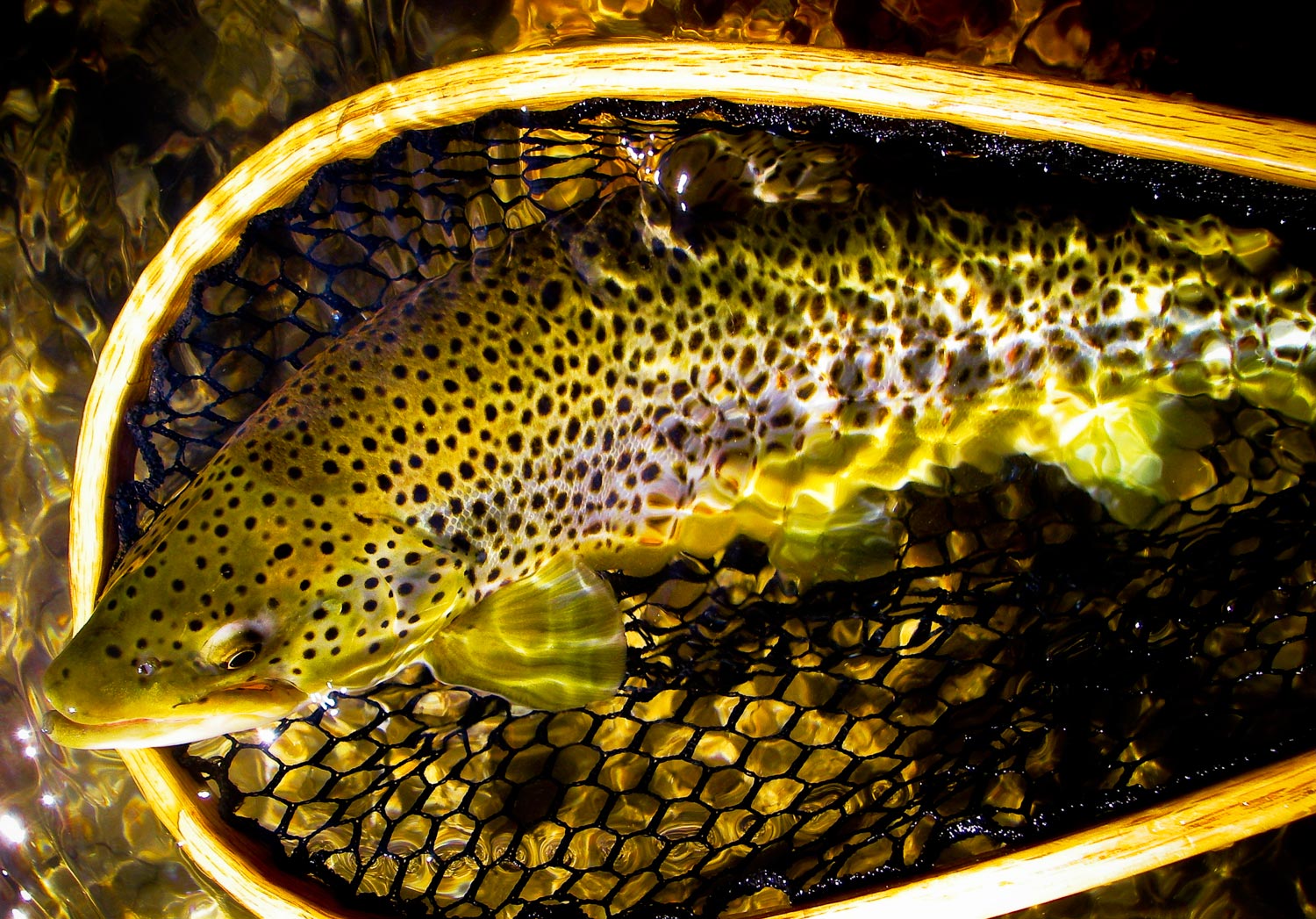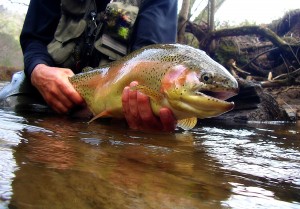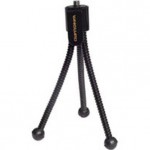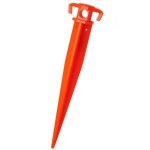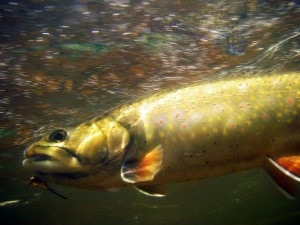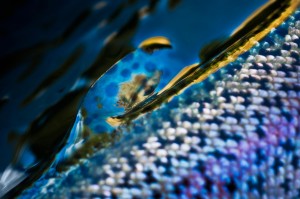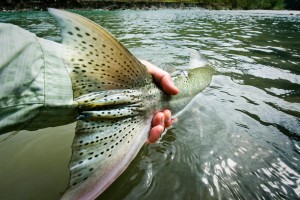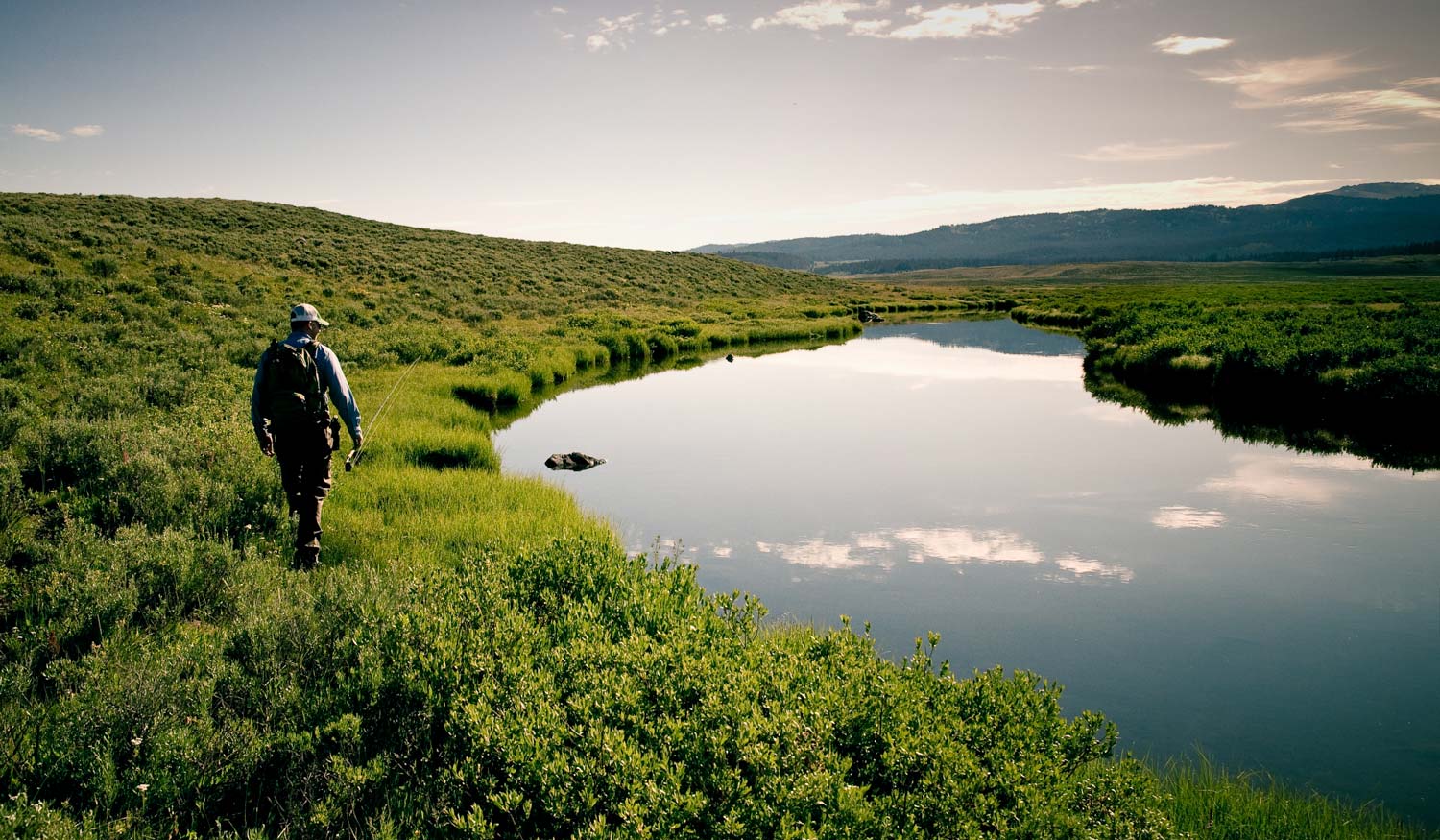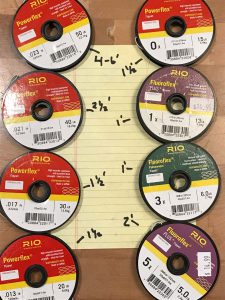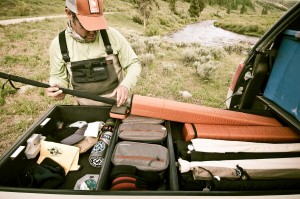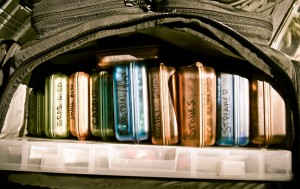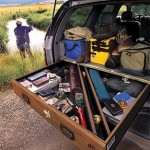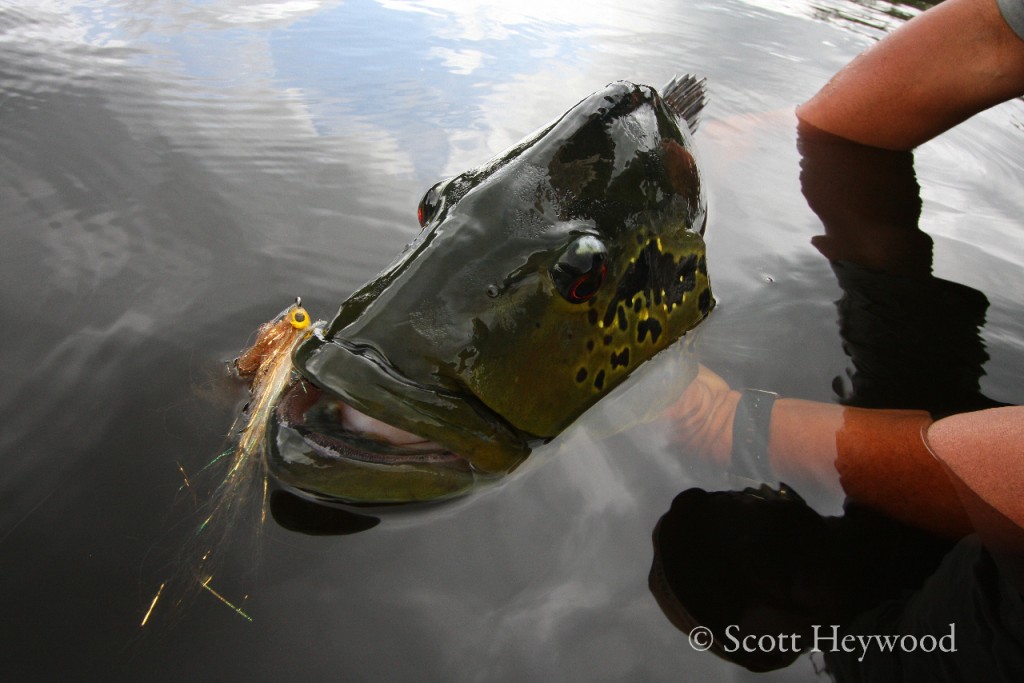
Fly Fishing for Peacock Bass in the Amazon. Photo By: Scott Heywood
Packing for Success in the Amazon
If you haven’t read part 1, you can find it here.
Preparing and packing the right gear prior to your departure to the Amazon is crucial for your overall trip enjoyment and fishing success. Following these gear recommendations, fishing tips, and general amazon facts, will ensure that you’ll be ready to tackle the monster peacock bass you’ll encounter as well as the hot tropical climate.
One important factor that rookie amazon anglers often fail to realize is water levels on the rivers and tributaries of the Amazon River can make or break your trip. Sometimes conditions will be perfect a week or two before your departure, and a couple days before your scheduled to leave, you’ll receive an updated water level report informing you that conditions have deteriorated. It’s just part of the game. It comes with fishing a river that provides us with 1/5 the worlds freshwater supply.
Talk to any veteran peacock bass angler and they’ll quickly tell you how big a role water levels play in the fishing and how helpless you are at controlling them. Despite there being both wet and dry fishing seasons in the Amazon, sometimes the seasons end up being the opposite of what they should be for the time of the year. Your best bet for coping with this uncertainty is booking your trip with the right Amazon outfitter or lodge. The, fly fishing only, Agua Boa Lodge, located in Brazil, is best suited for coping with both high and low water levels because of its specialized equipment, exclusive location, and the diversified fishing operations.
Water Levels are Important in the Amazon
If water levels are too high, peacock bass often will move back into the flooded jungle shorelines making them difficult to coax out or present a fly to. On the flip side of the coin, if water levels are too low, your guides might not be able to access certain watersheds, or even worse, those glory hole lagoons that often hold schools of trophy size peacock bass. It is after all, the rainforest, right? Don’t let this deter you from booking your trip though, I just mention this since there’s many anglers out there that think just because they travel to another continent they’ll have perfect fishing conditions. Unfortunately, that’s just not how it works in the real world. I learned a long time ago, keeping realistic expectations for my international fishing trips is the best approach. That way if I meet or even exceed my expecations, it’s icing on the cake.
Fish Species of the Amazon
What attracts the majority of anglers to the Amazon is its four species of hard fighting and beautiful peacock bass. The speckled peacock “paca” and peacock tunacare “barred” are the bread winners due to there ability to grow well over twenty pounds, while the other two species of peacocks, the butterfly and royal, grow up to 10 pounds but make up for their smaller size with higher overall numbers. But with over 3,000 fish species documented and countless others undiscovered in the Amazon Basin, you never know what you’re going to find at the end of your line. I suggest you bring a Boga Grip to safely handle and weigh your catches during your trip, because you’ll find most fish either have razor sharp teeth or pointy spines. Species that don’t pack these defenses will make up for it in size, agility, speed, and brute strength.
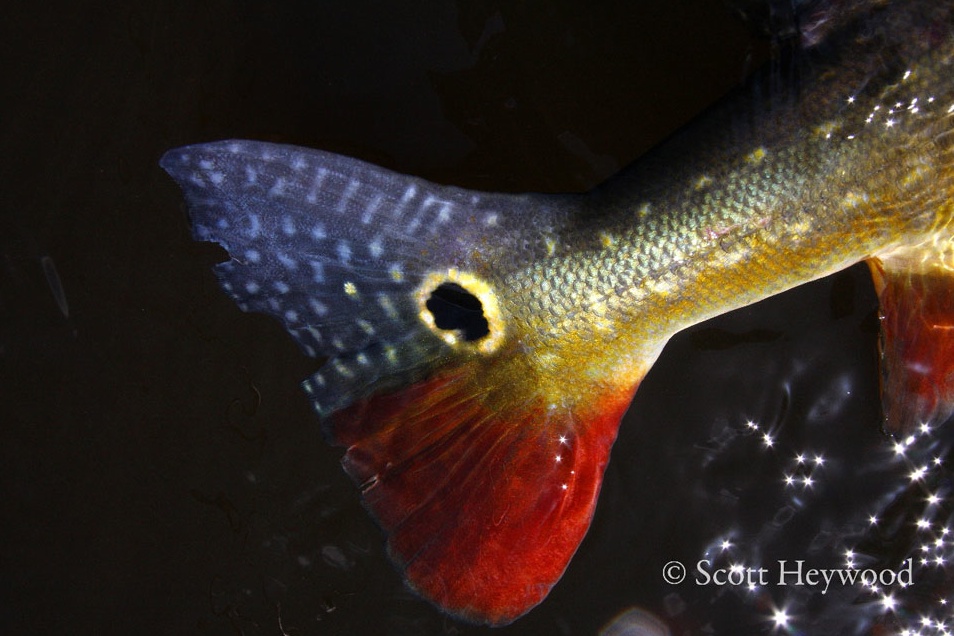
The Tail of a Speckled Peacock “paca”. Photo By: Scott Heywood
Fly Rods for the Amazon
Your sure to get plenty of sight-fishing in during your trip, particularly if you book at the Agua Boa Lodge. However, don’t be shocked if you end up blind casting large portions of the day in search of big peacocks. Most of the time the larger fish will be holding in deeper water out of sight, and it can be very exhausting making long casts followed by quick retrieves for hours on end. Make sure you pack three 9′ fast action fly rods in the 8-10 weight range. I recommend further choosing saltwater fly rods over freshwater rods because they generally have stronger butt sections, better suited for controlling and turning trophy peacock bass away from snags. I personally prefer a nine or ten weight for most my peacock bass fishing because I don’t like to be under gunned, but it’s nice to have an eight weight for the smaller butterfly peacocks and the other species you’ll encounter like aruana “arawana”, trieda and pacu.
Fly Reels for the Amazon
Until you hook into a big peacock bass your not going to be ready for their incredible power and strength. Your biggest obstacle is keeping them out of snags where they’ll quickly break you off. This calls for packing saltwater fly reels that have drag systems powerful enough to stop a freight train. I know it sounds cheesy, but that’s the first image that popped into my head when I hooked into my first 15+ pound peacock bass. I prefer high-end fly reels like Nautilus, Hatch, and Tibor that are powerful, durable and precision made. The last thing you want is burning up a reel in the middle of your trip or even worse watching helplessly as a fish of a lifetime peels off line towards the jungle timber. That being said, I will say the best fly reel won’t do you any good at stopping a fish until you clear the line and get the fish on the reel. Expect many fish to be lost within the first few seconds of the fight, which will greatly be dependent on how close your boat is from the bank, and at what point the fish eats during your retrieve.
Fly Lines & Fly Patters for the Amazon
I’m embarrassed to admit before I made my first trip to the Amazon for peacock bass, I thought all I needed was a tropical floating line and some big poppers. It’s true you can catch big peacocks this way but you’ll often find your best chances for consistently hooking up with the trophies, is to fish big streamers 4-6″ long with sinking fly lines. Floating lines and poppers are great for busting fish, smaller peacocks, and other exotic species, but most fly anglers will admit even saltwater poppers just don’t cause enough commotion on the surface to regularly bring up the big boys. It’s really hard for any popper or slider to compete with a 3 1/2 – 5 ounce Woodchopper or Riproller lure, thats churning and spraying water five feet in the air. Conventional lures like these have been known to call in peacock bass from over a hundred yards away at times. On top of that, casting large poppers is just too strenuous to keep up eight hours a day. Don’t get me wrong it will work and it’s fun seeing the peacock bass explode on your popper, but even the best fly casters will scream uncle after and hour or two.
If you do happen to find yourself on a trip in the Amazon with extreme low water, you may find the floating line with weighted streamers effective. Especially when sight-fishing to spooky fish. It’s a whole lot easier to present your fly softly with a floating line than a heavy sinking line. That’s the main reason you don’t want to make a trip down there without one because you always have to be ready to rig up according to the conditions. Odds are though, you’ll end up stowing your fly rod with the floating ling most of the time during the trip. You may even want to pack a clear intermediate fly line as well.
If you want to come back from the Amazon with bragging rights and pictures of you holding double-digit fish you better pack your 200-350 grain sinking fly lines. I stated before that most of the time the biggest peacocks will be found in the deeper water. You also find really quickly peacock bass prefer a very quick retrieve. Because of this, a sinking fly line is required to keep your flies down in the strike zone. I get asked all the time what are good fly patterns to tie for big peacock bass? Google fly patterns for pike and musky, that’s all you need to know. Just make sure you beef up your hooks to saltwater tarpon hooks or something comparable. Peacock bass can straighten even the strongest hooks. I spent many hours in a peacock bass tackle shop changing out factory treble hooks on Woodchoppers to 4x and 6x strong VMC hooks. That’s some serious hardware believe me.
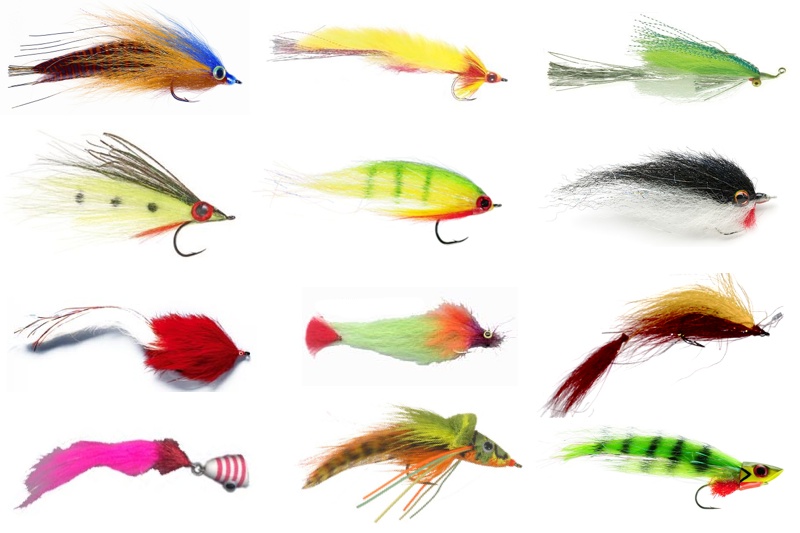
Leaders & Tippet for the Amazon
Peacock bass for the most part aren’t leader shy, except in extreme low water conditions which may call for a longer leader. Generally a 6′ fluorocarbon leader 30-50 lb. will work fine for peacock bass in most fishing conditions with floating lines. For sinking lines I like to use a 2-3′ fluorocarbon leader of 30-50lb. Remember that shallow low and clear water conditions may call for smaller pound test. I pack spools of 20 to 50 pound fluorocarbon on my trips. Make sure you pack plenty because your going to be retying quite a bit and you’ll also have break offs in snags. Depending on where your fishing piranha can reek havoc on your flies as well. Make sure you pack a good four dozen flies to be safe.
Productive Peacock Bass Water
Lagoons in the amazon are hotspots for big peacock bass. Once your guide brings you to these productive areas search out the deep water areas first. Position the boat in shallows and cast to the deep water. This is where you’ll regularly find the biggest fish in the area. Try to find key areas where peacock bass can drive forage food to the shallows that’s also in close proximity to deep water. Examples are the edges of jungle timber adjacent to deep water, the points of sandbars or sloughs between islands with deep water close. The mouths of the lagoons and the main river are hotspots for big peacocks waiting for fish to enter and exit the area. Search out grass and vegetation break lines working your flies into deep water.
During high water conditions find steep hard high banks on the river or in lagoons that limit the bait and peacocks from getting out of reach. Concentrating on points or isolated edges of timber or trees in high water will be the hotspots to look for. Whatever you do and no matter what river you fish in the Amazon, don’t let your guide keep you on the main river fishing straight lined banks all day long. It’s happened to me before and you won’t see near as much action as targeting lagoons, confluences, and bends.

Barred Peacock Bass. Photo By: Scott Heywood
Please contact Scott Heywood at Angling Destinations if you’re interested in booking an Amazon peacock bass trip. He’s got many trips under his belt personally and he can answer any questions you have about fly fishing the Amazon Basin, it’s smorgasbord of species, and all the trip details for the Agua Boa Lodge. If you’re lucky you might even find an open spot for his next hosted trip. I hope this post was informative and you’re drooling over the chance to tangle with one of the beautiful gamefish.
Keep it Reel,
Kent Klewein
Gink & Gasoline
www.ginkandgasoline.com
hookups@ginkandgasoline.com
Sign Up For Our Weekly Newsletter!

